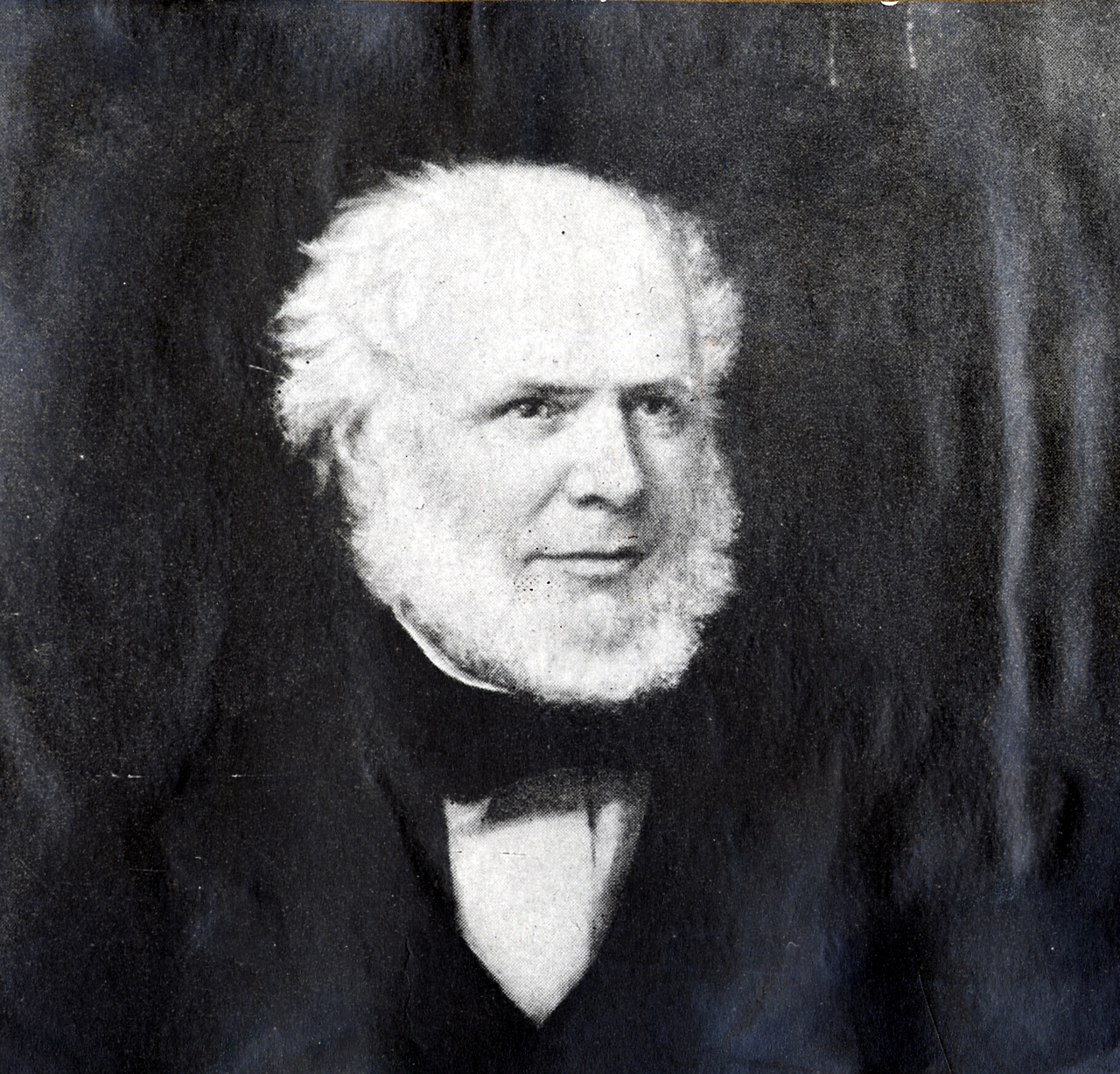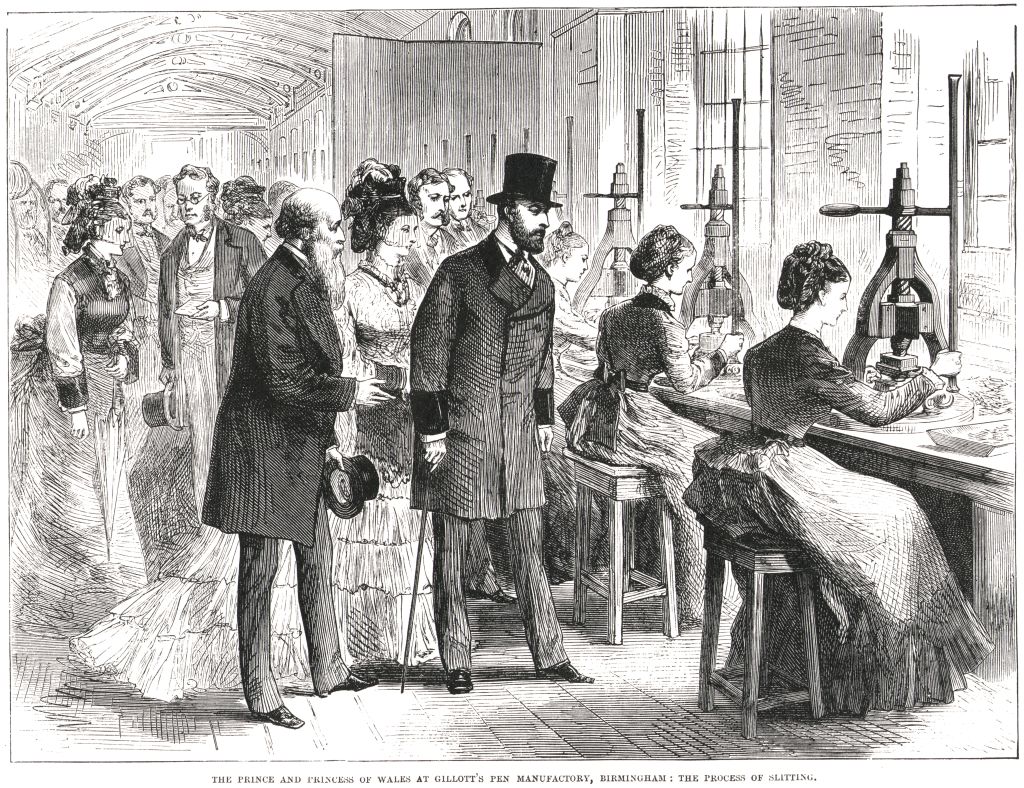Birmingham pen trade on:
[Wikipedia]
[Google]
[Amazon]
The Birmingham pen trade evolved in the
by Justine Halifax on ''Birmingham Live'', 21 Sep 2015 The trade also pioneered craftsmanship, manufacturing processes and provided employment opportunities especially for women, who constituted more than 70% of the workforce. In its peak, there were about 100,000 varieties of pens manufactured in Birmingham. By the end of the 19th century the number of manufacturers had declined to just 12.The pen is mightier
by Sarah Loat on the BBC The start of public sale of the Biro


 John Mitchell manufactured
John Mitchell manufactured
on Birmingham Jewellery Quarter (archived, 3 Dec 2019) In 1828
Brief Outline of Esterbrook History
/ref> He started by working in the stationery trade of Birmingham, where he learnt about the mechanical process invented by Mitchell for making steel pen nibs. In searching for opportunities, Esterbrook realized there were no steel pen manufacturers in the United States. He approached five craftsmen who worked for John Mitchell in Navigation Street with an idea of setting up a business in Camden, New Jersey. Esterbrook later went on to become one of the largest steel-pen manufacturers in the world. He returned to Birmingham for help when in 1928 the British Government placed restrictions on US imports. John Mitchell's factory was used to produce Esterbrook pens within the UK, through an agreement with Esterbrook representatives. In 1930 Esterbrook introduced a fountain pen in Britain which had a nib made of osmiridium, which eventually replaced large-scale production of steel-tipped pens. During
The Pen Museum
William Mitchell
Calligraphy website
{{DEFAULTSORT:Birmingham Pen Trade Writing implements Pens Economy of Birmingham, West Midlands Fountain pen and ink manufacturers History of Birmingham, West Midlands
Birmingham
Birmingham ( ) is a City status in the United Kingdom, city and metropolitan borough in the metropolitan county of West Midlands (county), West Midlands in England. It is the second-largest city in the United Kingdom with a population of 1. ...
Jewellery Quarter
The Jewellery Quarter is an area of central Birmingham, UK, in the north-western area of Birmingham City Centre, with a population of around 19,000 people in a area.
The Jewellery Quarter is Europe's largest concentration of businesses invol ...
and its surrounding area in the 19th century; for many years, the city was the centre of the world's pen trade, with most dip pen
A dip pen or nib pen or pen nib usually consists of a metal nib with capillary channels like those of fountain pen nibs, mounted in a handle or holder, often made of wood. Other materials can be used for the holder, including bone, metal and pla ...
s being produced there. At the height of the Jewellery Quarter's operations, there were about 100 pen factories, which employed around 8,000 skilled craftspeople.The making of the mighty pen in Birminghamby Justine Halifax on ''Birmingham Live'', 21 Sep 2015 The trade also pioneered craftsmanship, manufacturing processes and provided employment opportunities especially for women, who constituted more than 70% of the workforce. In its peak, there were about 100,000 varieties of pens manufactured in Birmingham. By the end of the 19th century the number of manufacturers had declined to just 12.The pen is mightier
by Sarah Loat on the BBC The start of public sale of the Biro
ballpoint pen
A ballpoint pen, also known as a biro (British English), ball pen (Hong Kong, Indian and Philippine English), or dot pen (Nepali) is a pen that dispenses ink (usually in paste form) over a metal ball at its point, i.e. over a "ball point". ...
in late 1945 caused further decline in the mass production of traditional pen nibs.
History
19th century


 John Mitchell manufactured
John Mitchell manufactured pen
A pen is a common writing instrument that applies ink to a surface, usually paper, for writing or drawing. Early pens such as reed pens, quill pens, dip pens and ruling pens held a small amount of ink on a nib or in a small void or cavity wh ...
s in Newhall Street
Newhall Street is a street located in Birmingham, England.
Newhall Street stretches from Colmore Row in the city centre by St Phillip's Cathedral in a north-westerly direction towards the Jewellery Quarter. Originally the road was the driv ...
; he went on to pioneer the mass production of steel pens (prior to this, the quill
A quill is a writing tool made from a moulted flight feather (preferably a primary wing-feather) of a large bird. Quills were used for writing with ink before the invention of the dip pen, the metal- nibbed pen, the fountain pen, and, eventual ...
was the most common form of writing instrument). The Mitchells are credited as being the first manufacturers to use machines to cut pen nibs, greatly speeding up the process. John's brother William later set up his own pen-making business in St Paul's square.
Baker and Finnemore operated in James Street, near St Paul's Square; C. Brandauer & Co Ltd. (founded as Ash & Petit) traded at 70 Navigation Street; Joseph Gillott & Sons Ltd. made pen nibs in Bread Street (now Cornwall Street) for companies such as Perry & Co.; Hinks, Wells & Co. traded in Buckingham Street; George W. Hughes traded in St Paul's Square; Leonardt & Catwinkle (then D. Leonardt & Co.) traded in George and Charlotte Streets, and M. Myers & Son. were based at 8 Newhall Street.More about the pen tradeon Birmingham Jewellery Quarter (archived, 3 Dec 2019) In 1828
Josiah Mason
Sir Josiah Mason (23 February 1795 – 16 June 1881) was an English industrialist, engaged in pen manufacture and other trades, and a philanthropist. He founded Mason Science College in 1875, which later became the University of Birmingham.
Bi ...
developed a cheap, efficient slip-in nib based on existing models, which could be added to a pen holder.
By the 1850s, Birmingham was the world center of steel pen and steel nib manufacture; more than half the steel-nib pens manufactured in the world were made there. Thousands of skilled craftsmen and women were employed in the industry. Many new manufacturing techniques were perfected in Birmingham, enabling the city's factories to mass-produce their pens cheaply and efficiently. These were sold worldwide to many who previously could not afford to write, thus encouraging the development of education and literacy.
Women made 18,000 pens a day, under strict rules of no talking, no singing, and no wasting of the metal among others. Men served as the toolmakers and looked after the furnaces but the majority of the workers in the factories were women. In the latter half of the 19th-century young children were also employed, with ages varying between 10–12 years old.
20th century
Another manufacturer was Richard Esterbrook, who madequill
A quill is a writing tool made from a moulted flight feather (preferably a primary wing-feather) of a large bird. Quills were used for writing with ink before the invention of the dip pen, the metal- nibbed pen, the fountain pen, and, eventual ...
s in Cornwall
Cornwall (; kw, Kernow ) is a historic county and ceremonial county in South West England. It is recognised as one of the Celtic nations, and is the homeland of the Cornish people. Cornwall is bordered to the north and west by the Atlantic ...
, his home town./ref> He started by working in the stationery trade of Birmingham, where he learnt about the mechanical process invented by Mitchell for making steel pen nibs. In searching for opportunities, Esterbrook realized there were no steel pen manufacturers in the United States. He approached five craftsmen who worked for John Mitchell in Navigation Street with an idea of setting up a business in Camden, New Jersey. Esterbrook later went on to become one of the largest steel-pen manufacturers in the world. He returned to Birmingham for help when in 1928 the British Government placed restrictions on US imports. John Mitchell's factory was used to produce Esterbrook pens within the UK, through an agreement with Esterbrook representatives. In 1930 Esterbrook introduced a fountain pen in Britain which had a nib made of osmiridium, which eventually replaced large-scale production of steel-tipped pens. During
World War II
World War II or the Second World War, often abbreviated as WWII or WW2, was a world war that lasted from 1939 to 1945. It involved the vast majority of the world's countries—including all of the great powers—forming two opposing ...
, pen manufacture in the city was somewhat disturbed. Mitchell's factory on Moland Street was struck by an incendiary bomb
Incendiary weapons, incendiary devices, incendiary munitions, or incendiary bombs are weapons designed to start fires or destroy sensitive equipment using fire (and sometimes used as anti-personnel weaponry), that use materials such as napalm, t ...
; the premises were partially rebuilt during the war with government aid, on condition that a government stationery office and ammunition assay office could reside there. The John Mitchell business and factory were sold to Esterbrook in 1947. Twenty years later, the Esterbrook Pen Co. was taken over by the " Venus Pencil Co", which had a modern factory in King's Lynn, Norfolk
Norfolk () is a ceremonial and non-metropolitan county in East Anglia in England. It borders Lincolnshire to the north-west, Cambridgeshire to the west and south-west, and Suffolk to the south. Its northern and eastern boundaries are the No ...
, to which Esterbrook's production was transferred until 1972.
Manufacturers
Some of the main pen makers of Birmingham were: Baker & Finnemore, C. Brandauer & Co., Hinks Wells & Co., Joseph Gillott's, Geo W. Hughes, D. Leonardt & Co., Macniven & Cameron,Josiah Mason
Sir Josiah Mason (23 February 1795 – 16 June 1881) was an English industrialist, engaged in pen manufacture and other trades, and a philanthropist. He founded Mason Science College in 1875, which later became the University of Birmingham.
Bi ...
, John Mitchell, William Mitchell, M. Myers & Son, Perry & Co., A. Sommerville & Co.
See also
* Calligraphy *Dip pen
A dip pen or nib pen or pen nib usually consists of a metal nib with capillary channels like those of fountain pen nibs, mounted in a handle or holder, often made of wood. Other materials can be used for the holder, including bone, metal and pla ...
* List of pen types, brands and companies
A pen is a handheld device used to apply ink to a surface, usually paper, for writing or drawing. Additional types of specialized pens are used in specific types of applications and environments such as in artwork, electronics, digital scanning ...
* Pen Museum
References
External links
The Pen Museum
William Mitchell
Calligraphy website
{{DEFAULTSORT:Birmingham Pen Trade Writing implements Pens Economy of Birmingham, West Midlands Fountain pen and ink manufacturers History of Birmingham, West Midlands